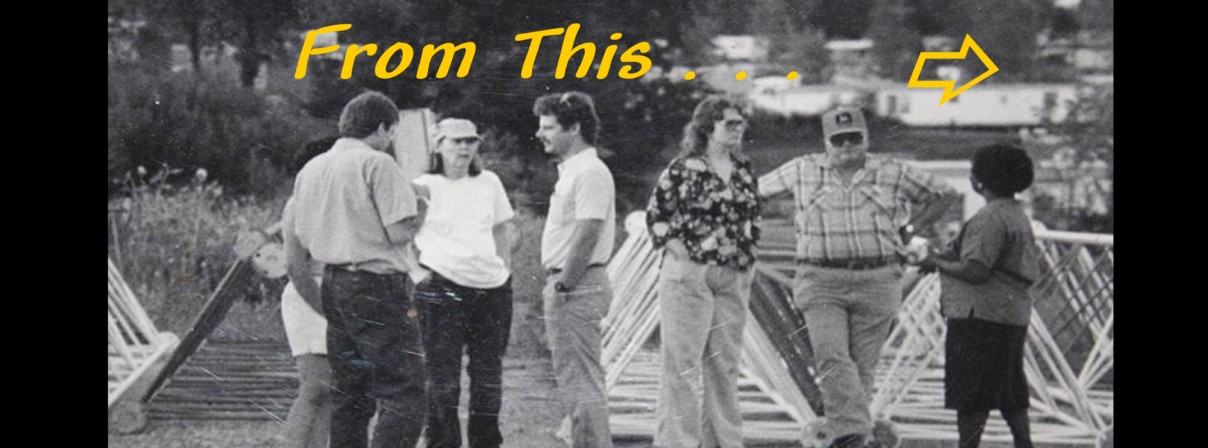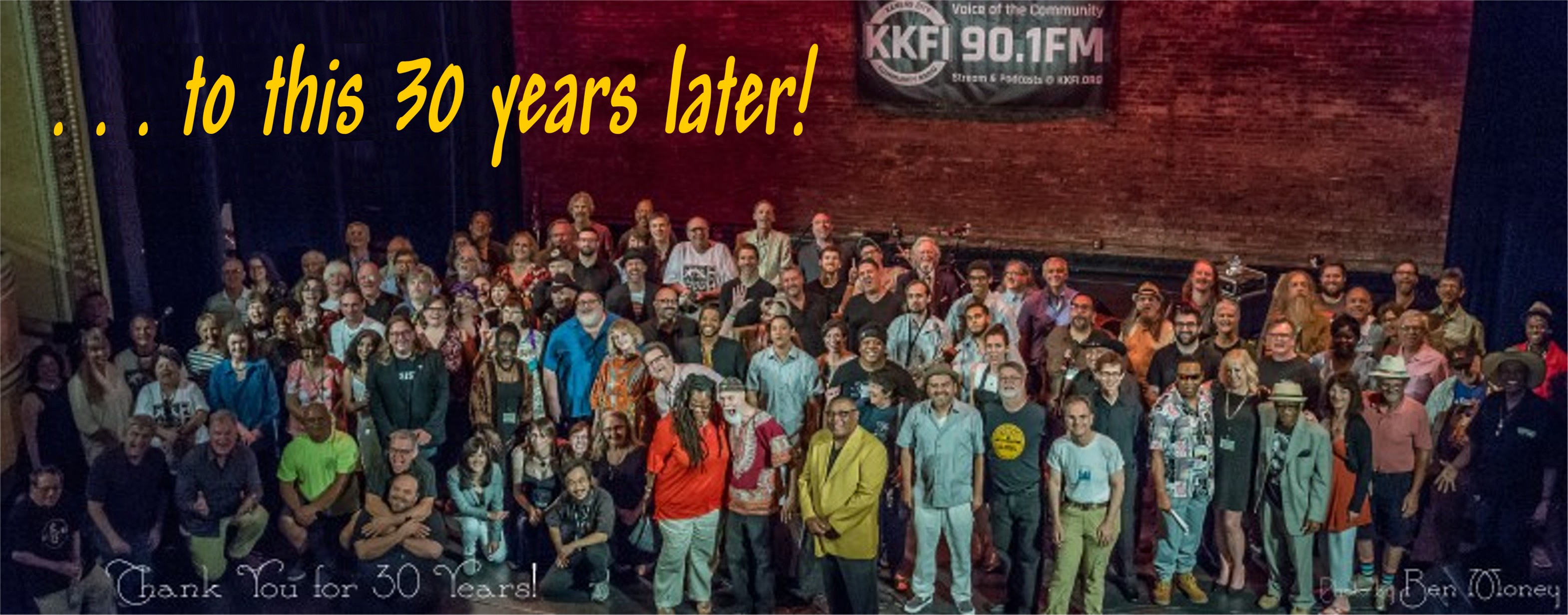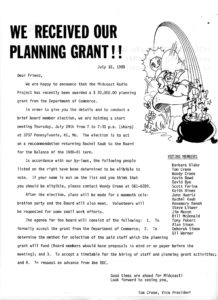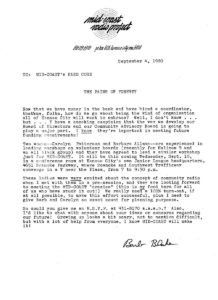1980 was a joyous and a busy year! We received the Department of Commerce Planning Grant, set up a new office, hired a planning coordinator, engaged a Washington broadcasting attorney, and started a search for a radio tower site. Great challenges were ahead!
One of the problems left over from 1979 that needed to be solved was the situation of not having a location on the radio dial to put what would become KKFI.
With 2, 10-watt radio stations in KC, we needed to deal with them to get on the radio dial. We either needed to cooperate with one 10-watt station to move their spot and share the frequency with another; or move one 10-watt station and knock the other off the air.
The facts were, that the chief engineer at Parkville’s KGSP station decided to make a major move and increase his power to a hefty 100 watts. After meeting with him, he was not interested in moving his station to another spot to make room for Mid-Coast.
The other station, KGSP of the Nazarene Church, had their antenna on a telephone pole, and were only on the air a limited amount of time every day. Going to meet with them was like meeting the Men-in-Black. That’s the way they dressed, anyway.
We told them of the impending FCC change in rules, and that we would be willing to share the frequency with them. (Imagine a community radio station sharing a frequency with a religious station – jazz in the morning, preaching at night).
The MIBs at KTSR looked at our delegation like we were crazy and did not believe what we said.
So – it was deadlocked. Looked hopeless. A miracle would have to happen.
In a bold-move – we sent a delegation to meet with the president of Park College. We explained what we wanted to do, and offered to pay to move KGSP to another part of the band to make room for us. He looked at our scruffy-appearing bunch skeptically but said he would agree if we would pay any expenses required. (He probably thought this was pie-in-the-sky anyway and it would never happen). A final settlement with Park College’s KGSP would finally take place in 1983.
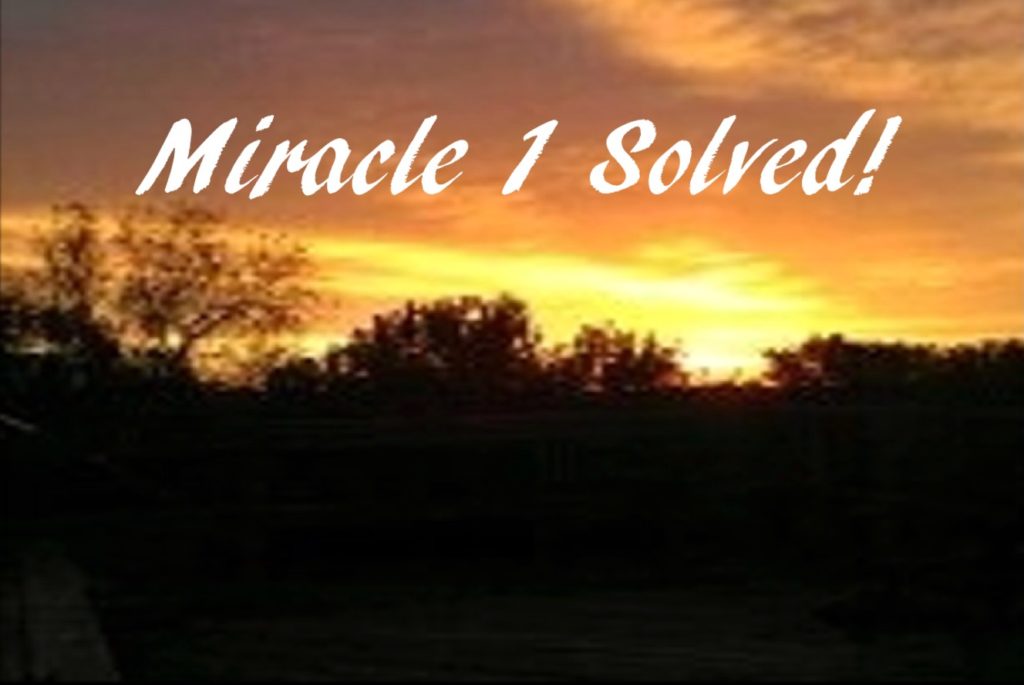
Next step – somehow convince those serious people at KTSR that we meant them no harm and would share the spot on the dial with them. We approached them again and were rebuffed.
On the third visit, we were not as friendly and notified them that we planned to apply for a 100,000-watt radio station whether they cooperated or not.
Good thing they didn’t – they ultimately were pushed off the air by KKFI – the only case known where a community radio station knocked off a religious station. But, suddenly, they realized they were about to lose their station and it was over.
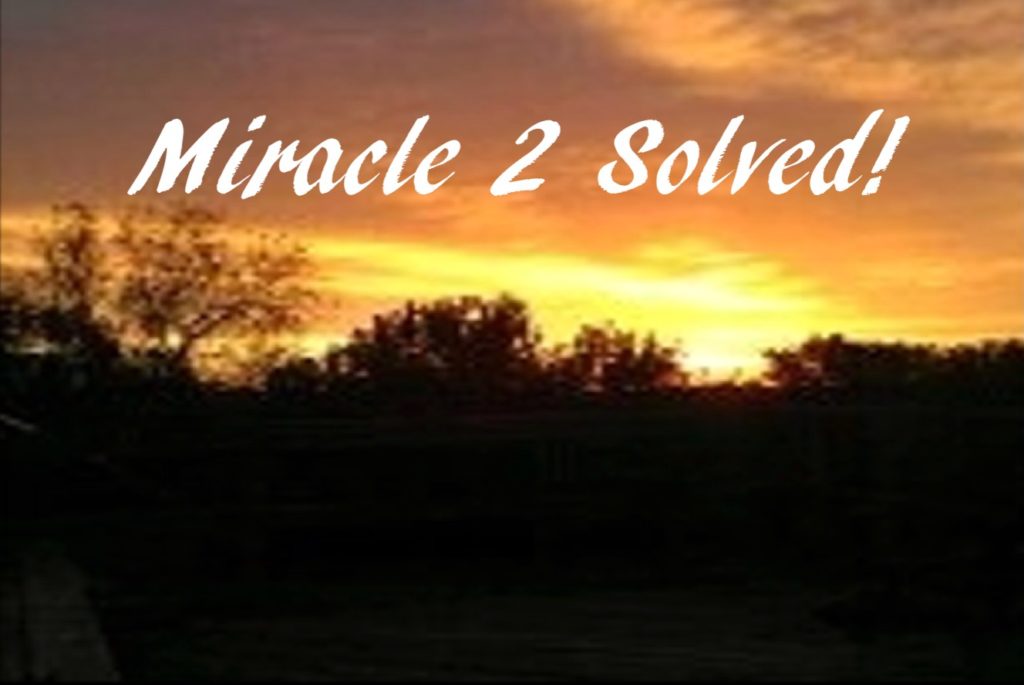
NEXT STEP – APPLYING FOR THAT PLANNING GRANT. Here are some of the pages and steps needed to complete the PTFP/NTIA grant application.
As a part of preparing for the planning grant, an ascertainment of community needs had to be included. In March 1971 the Federal Communications Commission which issues brodacast licenses in the US, sent out directives to broadcast stations. This was a set of regulatory guidelines put in question and answer form which required both prospective and current broadcast licensees to determine the “problems, needs and interests” of the area they proposed to serve. Since Mid-Coast hoped to put its own radio station on the air, a questionnaire was developed and sent to organizations in the Kansas City community to complete this task. Over 50 interviews were conducted and added to the application eventually.
Mid-Coast applied for a $20,000 planning grant.
Some weather-worn pages from the original 1980 grant application:
THEN!
So much went on in 1980! Woody Crane, the former chief engineer for WGN TV and Radio, retired, moved to Kansas City moving in with his son, and spent hours working on the engineering that was needed to apply for the broadcast license. Engineering studies had to be done, a tower site had to be found, and a tower-site lease had to be signed. After surveying the area it was found that only a small area in the northeastern part of the city which would not interfere with other broadcast frequencied in the area, could be used to put the broadcast tower for Mid-Coast Radio. Here are some of the surveying documents, tower-site locations, and leasing arrangements that were used.
Barbara Blake was hired from the planning grant as project-coordinator, to oversee a future equipment grant and preparing the FCC license application.
The Mid-Coast Radio Newsletters written by volunteers, tell the story of all the great activity in 1980.
Fundraising began in earnest.
The many decisions that had to be made in the momentous 1980 year can be seen in some of the minutes of meetings that took place in that year!
March, 1980 Minutes
September, 1980 Minutes
October, 1980 Minutes
November, 1980 Minutes
December, 1980 Minutes
Throughout the year, Mid-Coast Volunteers got the word out to the public.
The amazing amount of work done in a short time left everyone involved with the project breathless, as this memo shows!
By the end of 1980, the Mid-Coast Radio Project was a functioning organized effort. This was part of the 1980 annual report.

